When I first started looking at ways to add character to my walls, I felt like I’d fallen down a rabbit hole of confusing terms. Wainscoting, beadboard, shiplap… they all seemed to blend together.
My goal was to move beyond the photos on social media and truly understand the practical differences: the cost, the installation headaches, and the long-term livability of each. This article is the culmination of that research.
I’m going to walk you through everything I’ve learned, breaking down wainscoting, beadboard, and shiplap so you can get a clear picture of what each one truly entails for your home.
Comparison At A Glance
| Feature | Wainscoting | Beadboard | Shiplap |
| Primary Definition | An architectural treatment covering the lower portion of an interior wall, typically 32-48 inches high. It’s a style, not a single material. | A specific type of paneling characterized by decorative, vertical grooves (or “beads”) milled into the surface, spaced closely together. | A type of wooden board with a distinctive “rabbet” joint (an L-shaped groove) on opposite sides, allowing the boards to overlap and create a small, consistent gap. |
| Common Styles | Raised Panel, Flat Panel, Board and Batten, Beadboard Wainscoting. | Cottage, Coastal, Traditional, Farmhouse. | Modern Farmhouse, Rustic, Coastal, Scandinavian, Industrial. |
| Installation | Generally complex and often requires a skilled carpenter, especially for intricate styles like raised panel. Involves multiple components: panels, stiles, rails, and cap mouldings. | Moderately easy. Available in large 4×8 foot sheets which are fast to install, or as individual tongue-and-groove planks which are more time-consuming. | Moderately easy for a DIYer. The overlapping rabbet joint is more forgiving than tongue-and-groove, making it easier to achieve a clean look. |
| Typical Cost | Highest. Varies significantly based on material (MDF vs. solid wood) and complexity. Custom work is a significant investment. | Lowest. MDF sheets are very budget-friendly. Solid wood planks are more expensive but still generally cheaper than custom wainscoting. | Moderate. Typically priced per linear foot. Can be more expensive than beadboard sheets when covering a large area, but often cheaper than custom wainscoting. |
| Common Materials | Solid Wood (Oak, Pine), MDF (Medium-Density Fiberboard), Plywood, PVC. | MDF, Solid Wood (Pine, Cedar), Vinyl/PVC. | Pine, Cedar, MDF, Reclaimed Wood. |
| Best For | Adding formal architectural elegance and durability to dining rooms, entryways, and hallways. Protecting walls from scuffs and chair damage. | Creating a charming, clean, and textured look in less formal spaces like bathrooms, kitchens, laundry rooms, and mudrooms. | Creating a rustic or modern accent wall, ceiling feature, or fireplace surround. Versatile enough for horizontal or vertical application. |
| Key Feature | Its application on the lower third of the wall, creating a distinct visual break and adding a layer of sophisticated architectural detail. | The repeating, narrow vertical grooves that create a distinctive, uniform texture. | The visible, clean gap between each board created by the overlapping rabbet joint. |
Wainscoting: The Timeless Architectural Statement
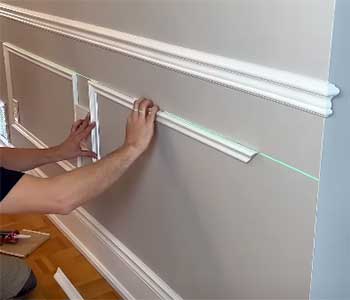
My journey into wall treatments began with what I consider the most traditional and, in many ways, the most intimidating option: wainscoting.
The term itself sounds historic and formal, and for good reason.
At its core, wainscoting isn’t one specific product but rather a design concept—the application of paneling to the lower portion of a wall, usually capped with a decorative molding, often called a chair rail.
Historically, its purpose was purely functional: to insulate drafty stone walls and protect them from damage. Today, its primary role is aesthetic, lending a sense of permanence, structure, and elegance to a room.
When I started exploring wainscoting, I quickly learned it’s a broad category with several distinct styles, each with its own personality.
- Raised Panel: This is the heavyweight champion of formality. Think of grand historic homes, formal dining rooms, and stately offices. Each panel has beveled edges that make it appear raised in the center. The play of light and shadow on these beveled edges is what gives it such depth and a luxurious, three-dimensional quality. It’s constructed from a framework of horizontal rails and vertical stiles, and it feels incredibly solid and custom-built—because it usually is.
- Flat Panel (or Shaker-style): This is a more modern, cleaner take on paneling. Instead of raised centers, the panels are completely flat, framed by the same stiles and rails. The look is more understated and less ornate. I found this style to be incredibly versatile, fitting comfortably into Craftsman, transitional, and even contemporary homes. It provides architectural interest without the commanding presence of raised panel wainscoting.
- Board and Batten: This style has surged in popularity, often associated with the modern farmhouse aesthetic, but its roots are much older. It consists of wide, flat boards installed vertically, with their seams covered by thin vertical strips of wood called battens. The result is a clean, geometric, and rhythmic pattern. The spacing of the battens can be adjusted to create different looks, from wide and stately to narrow and modern. I’ve seen it used to create stunning floor-to-ceiling accent walls, but in its classic wainscoting form, it adds incredible texture and a sense of bespoke craftsmanship.
The Pros of Choosing Wainscoting
From an analytical standpoint, the advantages of investing in wainscoting are significant and long-lasting.
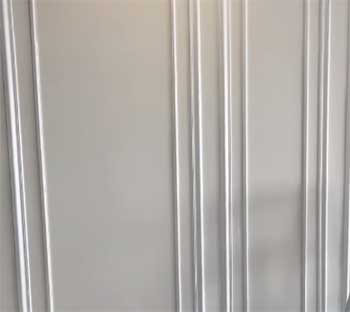
First and foremost is unmatched durability and protection. This is its original purpose, and it still holds true.
In a high-traffic area like a hallway, entryway, or dining room, the lower half of the wall takes a beating from chairs, bags, shoes, and general life.
A solid wainscoting installation acts as beautiful armor.
Dents and scuffs that would mar drywall are simply absorbed by the robust wood or MDF paneling.
From a practical user perspective, I realized this means fewer touch-ups and easier cleaning; a quick wipe-down of the semi-gloss paint on the wainscoting is far easier than trying to scrub a scuff mark off a flat-painted wall.
The second major pro is the immense architectural character it adds. A plain, boxy room can be instantly transformed. Wainscoting introduces lines, shadows, and a sense of history that paint alone can never achieve.
It grounds the room, provides a horizontal visual break that can make a space feel more balanced, and serves as a beautiful backdrop for furniture. When I looked at before-and-after photos, the difference was astounding. It’s not just decorating a wall; it’s fundamentally changing the room’s architecture for the better.
This often translates into a quantifiable increase in home value, as it’s seen as a premium, permanent upgrade by potential buyers.
Finally, there’s its timeless appeal. While specific trends come and go, well-executed wainscoting, particularly classic styles like flat panel or board and batten, rarely looks dated.
It has been used for centuries and continues to be a hallmark of quality construction and thoughtful design. It’s a commitment, but one that pays dividends in enduring style.
The Cons of Wainscoting
Of course, this level of quality and style comes with some serious considerations that I had to weigh carefully.
The most significant barrier for most people, myself included, is the cost. True wainscoting, especially raised panel or custom board and batten made from solid wood, is not a budget-friendly project. The materials themselves are only part of the equation.
The real cost often lies in the labor. This is not a beginner-friendly DIY project. It requires precision measurement, intricate cuts (especially for angled corners or uneven walls), and a deep understanding of carpentry to look seamless.
Hiring a skilled finish carpenter is an investment, and for a large room, the total cost can easily run into the thousands.
This leads directly to the next con: installation complexity. Unlike a bucket of paint, wainscoting is a construction project. Walls are rarely perfectly plumb or straight, and floors are seldom perfectly level. A professional has the tools and experience to scribe the baseboards to the floor and adjust the panels to accommodate these imperfections.
For a DIYer, it can become a frustrating puzzle of gaps and misalignments. Even the simpler-looking flat panel or board and batten styles require careful planning and execution to achieve a professional result.
From a user experience perspective, maintenance can also be a drawback. All those beautiful ledges, bevels, and crevices that create such character are also perfect magnets for dust. Keeping wainscoting clean requires regular dusting and wiping, more so than a flat wall.
Lastly, it represents a significant style commitment. While timeless, a very formal raised-panel wainscoting might feel out of place in a casual, modern home.
Once it’s installed, it’s a major undertaking to remove, often requiring significant drywall repair afterward. You are essentially locking in a specific level of formality for that room.
Beadboard: The Charming and Approachable Cousin
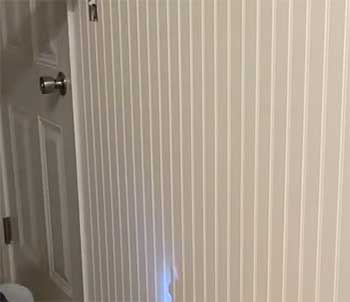
After the formal gravity of wainscoting, turning my attention to beadboard felt like a breath of fresh, coastal air.
If wainscoting is a tailored suit, beadboard is a crisp linen shirt—classic, comfortable, and effortlessly stylish.
It is a specific type of paneling, defined by its distinctive pattern of single or double vertical grooves, or “beads,” milled into the wood, with a narrow, flat space between them.
This pattern creates a delicate, striped texture that is instantly recognizable.
What I found most appealing about beadboard is its approachability. It offers a textured, architectural look without the cost or formality of traditional wainscoting.
In fact, one of the most common ways to use beadboard is to create beadboard wainscoting, where it serves as the paneling for the lower third of the wall, topped with a chair rail. But it’s also versatile enough to be used on ceilings, as a kitchen backsplash, or to wrap a kitchen island.
It typically comes in two main forms, which greatly impacts the project’s scope and budget. The first is large 4×8-foot sheets, usually made of MDF or hardboard. These are designed for rapid coverage.
The second form is individual planks, often made of solid pine or PVC, that fit together with a tongue-and-groove system. The planks offer a more authentic, slightly more rustic look, as you can see the faint lines where each individual board meets.
The Pros of Choosing Beadboard
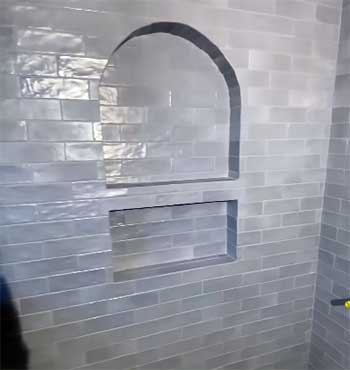
My analysis of beadboard revealed why it’s such a perennial favorite in home design.
The most compelling advantage is its affordability and ease of installation.
This is especially true for the large sheets.
For a fraction of the cost of custom wainscoting, I could buy a few sheets of beadboard from a home improvement store and cover the lower walls of a room in a single weekend.
The sheets cut easily with a circular saw, and you can simply glue and nail them to the wall. This makes it an incredibly popular choice for DIYers. Even the individual planks, while more time-consuming, are generally manageable for someone with basic carpentry skills.
Next is its distinctive, charming aesthetic. Beadboard evokes a sense of comfort and cleanliness. It’s synonymous with cozy cottage style, breezy coastal homes, and clean, functional farmhouse mudrooms and bathrooms.
The tight vertical lines can also create an optical illusion, making a ceiling feel slightly higher, which is a fantastic benefit in rooms with lower-than-average ceiling heights. It adds texture and interest without being visually overwhelming.
Another huge practical advantage is the availability of moisture-resistant options. Beadboard made from PVC or vinyl is completely waterproof, making it an ideal choice for high-humidity environments like bathrooms, laundry rooms, and even as a backsplash behind a sink.
Unlike wood or MDF, it will never swell, warp, or rot due to moisture exposure. For me, this was a game-changing feature, opening up possibilities for adding character in spaces where I would never risk putting traditional wood paneling.
The Cons of Beadboard
Despite its many charms, I had to be realistic about beadboard’s limitations.
One of the biggest user complaints I came across relates to cleaning. Those charming little grooves are notoriously difficult to keep clean. They are perfect traps for dust, kitchen grease, and bathroom grime.
Wiping down a large area of beadboard requires more effort than a flat surface; you often need a brush or a cloth wrapped around a thin tool to really get into the grooves. This is a significant long-term maintenance consideration.
The durability can also be a concern, specifically with the most common material, MDF. While affordable, MDF sheets can be prone to denting upon sharp impact.
More importantly, if the factory-primed surface gets deeply scratched or if the bottom edge is exposed to pooling water (like from a wet mop), the MDF can absorb the moisture and swell up like a sponge, a type of damage that is irreversible. Solid wood or PVC planks are far more durable but also push the cost up.
Aesthetically, while charming, beadboard can sometimes look visually “busy.” The repeating pattern of narrow vertical lines can feel a bit overwhelming if used over a very large expanse. It generally works best on smaller areas or as wainscoting rather than on all four walls from floor to ceiling in a large living room. Its inherent style is also quite specific.
While perfect for casual, rustic, or coastal interiors, it can look out of place and a bit flimsy in a more formal or modern setting. It lacks the gravitas and architectural weight of true wainscoting.
Shiplap: The Modern Rustic Favorite
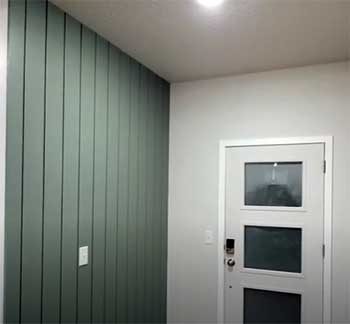
No discussion of wall treatments in the last decade would be complete without talking about shiplap.
Thanks to its prominent feature on home renovation shows, shiplap exploded from a functional exterior siding material into a full-blown interior design phenomenon.
I have to admit, I was initially skeptical, wondering if it was just a fleeting trend.
But as I looked closer, I understood its appeal and its unique characteristics that set it apart.
The defining feature of shiplap is not just that it’s a wooden plank; it’s the specific joint used to connect the boards. Each plank has a special L-shaped groove, called a “rabbet,” milled along its top and bottom edges.
When the boards are installed horizontally, the top rabbet of the lower board rests behind the bottom rabbet of the upper board. This overlap creates a consistent, distinctive gap or channel between the boards.
This is what gives shiplap its signature look—a clean, linear shadow line that adds immense texture and interest to a wall. It’s different from simple butt-jointed planks (which would have uneven gaps) and from tongue-and-groove (where the joint is hidden).
The Pros of Choosing Shiplap
The meteoric rise of shiplap isn’t without good reason. It has several key advantages that I found very compelling.
Its primary pro is its versatile aesthetic. While it’s the undisputed king of the modern farmhouse style, shiplap is surprisingly adaptable. Painted a crisp white, it can feel coastal and breezy. Painted a dark charcoal or navy, it can become a dramatic, modern accent wall.
Left as natural or reclaimed wood, it leans rustic and industrial. A key feature is that it can be installed horizontally or vertically, completely changing the feel of a room.
Horizontal installation makes a room feel wider and more expansive, while vertical installation can draw the eye upward, making ceilings feel taller. This flexibility allows for a high degree of customization.
From a DIY perspective, shiplap is arguably one of the easiest plank-style wall treatments to install. That rabbet joint is incredibly forgiving. It self-spaces the boards, ensuring a consistent gap every time.
Unlike tongue-and-groove which needs to be seated perfectly, the shiplap overlap hides minor imperfections in the wall and can even be installed directly over drywall with the proper nailing technique into the studs.
This makes creating a stunning accent wall a very achievable weekend project for many homeowners.
Shiplap is also fantastic at creating texture and shadow. The clean lines and subtle shadows break up the monotony of a flat drywall surface in a way that feels both rustic and clean.
It’s less busy than beadboard and less formal than wainscoting, hitting a sweet spot of relaxed, visual interest. It can be used on a full accent wall, on a ceiling to add unexpected character, or even as a unique treatment for a fireplace surround or kitchen island.
The Cons of Shiplap
My investigation wouldn’t be complete without addressing the very real downsides that I, and many others, have considered.
The most talked-about con is the “dust shelf” phenomenon. That signature gap that makes shiplap so visually appealing is also its biggest maintenance headache. Each channel is a perfect horizontal ledge for dust to settle on.
In a low-traffic area, it might not be a big deal, but on a large wall in a main living area, it requires frequent dusting with a vacuum brush attachment or a microfiber duster. This is a real, practical drawback that you have to be willing to live with.
Another significant consideration is its trendiness. Because its popularity rose so quickly, there’s a real risk that it could make a home feel dated in the future, much like avocado green kitchens or popcorn ceilings did for previous generations.
To mitigate this, I’ve concluded that its application is key. Using shiplap thoughtfully as an accent, perhaps in a style of home that naturally leans rustic or coastal, will likely give it more staying power than covering every wall in a suburban tract home with it.
While often perceived as cheap, the cost can be deceptive. When you calculate the price per square foot, shiplap boards are typically more expensive than beadboard sheets.
Covering an entire large wall can add up quickly, potentially costing more than you might initially budget for what seems like a simple “plank” project.
Finally, like any strong pattern, it can overwhelm a space. A room with shiplap on all four walls can sometimes feel claustrophobic, like the inside of a shipping crate—which, ironically, is where the material got its name. Its power is often in its use as a feature, creating a focal point rather than becoming the entire background.
Frequently Asked Questions (FAQ)
The key difference is that “wainscoting” is a design style—a treatment covering the lower portion of a wall—while “beadboard” is a specific product with vertical grooves. You can use the product (beadboard) to create the style (wainscoting). However, you can also create wainscoting using other styles like raised panels or board and batten.
Shiplap is a specific type of board identified by its overlapping rabbet joint that creates a distinct gap. Wainscoting is a design style where only the lower part of the wall is covered. While you could technically install shiplap on just the lower third of a wall to create a wainscoting effect, shiplap is more commonly used to cover entire accent walls or ceilings.
Generally, beadboard is less expensive than shiplap. Beadboard is often sold in large, budget-friendly MDF sheets that cover a lot of area quickly. Shiplap is sold by the individual board or linear foot, and the total cost to cover the same square footage is typically higher than for MDF beadboard sheets.
Several trends are emerging as popular alternatives to shiplap. These include fluted or reeded paneling, which offers a sophisticated, rounded vertical texture; modern plaster finishes like limewash or tadelakt for an organic, artisanal look; and a resurgence of modern, slimmed-down board and batten for a clean, geometric effect.
Conclusion: Making The Right Choice For You
After walking through the unique personalities, practical benefits, and potential pitfalls of wainscoting, beadboard, and shiplap, my journey has brought me to a clear conclusion.
There is no single “best” option—only the best option for your specific project, your home’s style, and your tolerance for cost and maintenance.
If you are looking to infuse a room with a timeless, formal elegance and a durable, architectural foundation that will add tangible value to your home, then investing in wainscoting is the undeniable choice. It’s a serious commitment, but one that delivers a level of sophistication the others can’t match.
If your goal is to add charm, texture, and a clean, classic feel to a space on a budget, beadboard is your hardworking friend. It’s perfect for transforming a bathroom, mudroom, or kitchen with a welcoming, cottage-like feel, especially when you can tackle the installation yourself.
And if you want to make a bold statement, creating a modern farmhouse or rustic focal point with texture and clean lines, shiplap is a fantastic tool. Used thoughtfully as an accent wall or ceiling treatment, it provides a contemporary yet relaxed vibe that can instantly update a space.
Ultimately, I encourage you to stand in your room, consider its purpose, and be honest about your budget and DIY ambition.
By understanding the core identity of each of these materials, you can now choose the one that will not only look beautiful but will also perfectly serve the story you want your home to tell.
